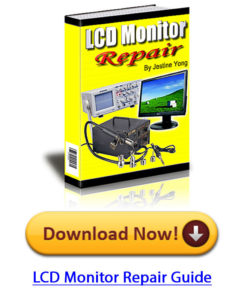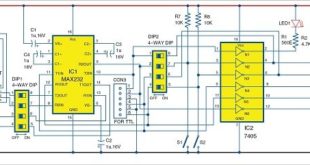Precision agriculture allows farmers to collect and process data in real time and make the best decisions with regards to planting, fertilising and harvesting crops.
Agriculture is an important sector in a country’s economy. It fulfils the demand for food of a nation. Sensors play an important role in this sector. These make agricultural work easier and increase agricultural productivity.
Agriculture is harnessing computer hardware, software, electronic instruments and control systems. Some related areas are agronomy, horticulture, veterinary medicine and food processing. Integrating sensors, electronics, control and power systems, and ICT engineering for agriculture is a key enabler for delivering improved food supply and sustainable energy production without increased burden on the limited fertile land bank. This exploration of non-traditional technologies to improve global farming is extremely time critical.
Smart agriculture, also known as precision agriculture, allows farmers to maximise yields using minimum resources, such as water, fertilisers and seeds. By deploying sensors and mapping fields, they can understand their micro-scale, conserve resources and reduce impact on the environment.
Smart agriculture has its roots going back to 1980s when global positioning system (GPS) capability became accessible for civilian use. Once farmers were able to accurately map their crop yields, they could monitor and apply fertiliser and weed treatments only to the areas that required it.
During 1990s, early precision agriculture users adopted crop yield monitoring to generate fertiliser and pH correction recommendations. As more variables could be measured and entered the crop model, more accurate recommendations for fertiliser application, watering and even peak yield harvesting could be made.
Agricultural sensors
Several sensing technologies are used in precision agriculture. These provide data that assist farmers to monitor and optimise crops as well as adapt to changing environmental factors. Some sensing technologies used in precision agriculture are given below.
Agricultural weather stations
These are self-contained units placed at various locations throughout the agricultural field. These stations have several sensors that are appropriate for local crops and climate. Information such as air temperature, soil temperature at various depths, rainfall, leaf wetness, chlorophyll, wind speed, dew point temperature, wind direction, relative humidity, solar radiation and atmospheric pressure are measured and recorded at predetermined levels. This data is analysed and sent wirelessly to a central data server at programmed intervals. The stations are portable and less expensive, and available at attractive prices for farms of all sizes.
Smartphone tools
A number of smartphone tools can be adapted to farming applications. For instance, crop and soil observations can be logged in the form of pictures, pin-pointing locations, soil colours, water, plant leaves and light properties.
Tools such as cameras, GPSes, microphones, accelerometers, gyroscopes and smartphone applications can greatly help farmers. Using these, they can identify crop diseases and make diagnoses. They can even calculate the amount of fertiliser required, and study the soil and water.
In the developing world, roughly 500 million small farms produce more than 80 per cent of the total food consumed. Agricultural sensors are becoming more widely accessible around the globe. According to UN projection, worldwide demand for food will increase by 50 per cent by 2050, and as such, precision agricultural technologies for farmers will be in demand.
Crop breeders, researchers and representatives from universities and industries are discussing new and improved ways of breeding resistant and highly productive crops.
Harvests will have to expand to feed a growing world population over the next decades. To achieve the goal without expanding cultivated areas at the expense of the environment, agricultural economists agree that agricultural sensors can greatly assist in this direction.
Uses of agricultural sensors in India
Several agricultural sensor-based equipment have been developed by agro-based electronic industries. For example, Waspmote Agriculture Board developed in India allows monitoring of multiple environmental parameters involving a wide range of applications. For this, it has been provided with sensors for measuring air and soil temperature, humidity, solar radiation, wind speed and direction, rainfall, atmospheric pressure, leaf wetness, and fruit or trunk diameter.
Up to 14 sensors can be connected at the same time to a dendrometer (device used to measure trees). To extend durability of the device after deployment, the equipment is endowed with a solid-state switch, which facilitates precise regulation of its power, prolonging the life of the battery.
Agricultural sensors are slowly taking foot in India. Vertical farming is becoming popular in smart cities. Drones are being used in large-scale farming for insecticide and pesticide spraying purposes. However, these sensor-based devices are yet to become popular in India. These need government assistance and large subsidies in prices.
Indian Space Research Organization (ISRO) has developed an Android-based application that collects real-time information to assess the damage caused to agricultural crops due to hail storms. This application allows the farmers to process faster insurance claims. It is currently used for rice and cotton crops in the states of Karnataka, Madhya Pradesh, Haryana and Maharashtra.
India faces various challenges in applying smart farming and the Internet of Things (IoT) in agriculture. Internet connectivity and availability is a major challenge. Then, there are aspects like presumption among vendors about Indian customers not being ready for advanced products. This results in drastically low awareness regarding IoT devices and systems among consumers. Also, the infrastructure required for the smooth functioning of IoT devices, such as smart grids and traffic systems, are far from ready. This further hinders the growth.
Among the technologies invented in the past few decades, smartphones have gained the largest market share in the Indian agricultural industry. This is due to their usefulness, ease of use and affordability. Rural farmers in India are constrained by a low level of literacy and lack of exposure to software interfaces. Therefore it is necessary for smartphone application developers to target farmers while developing agricultural applications.
Mobile-operated solar-based pumps reduce the cost of electricity for farmers. e-Fences—slowly becoming popular in rural India—help them save their crops from animals like elephants.
Vertical farming gaining popularity in smart cities
Vertical farms have the potential to generate more yield than traditional ones in smaller spaces, using trays of crops stacked on top of each other. These also reduce CO2 emissions and eliminate the need for vehicles to transport food over long distances.
Vertical farms rely on sensor data to establish and maintain ideal growing conditions. Moisture, pH and temperature sensors and more provide thousands of data points that help farmers improve the quality of crops and grow larger quantities.
Food inflation is a persistent problem in Indian economy. While demand patterns are predictable, estimating supply is a challenge. The cause of sudden, unpredictable and sharp rise in food inflation is usually due to lack of requisite and timely supply.
We often see higher price volatility in perishable crops like potatoes, tomatoes, coriander and onions. In recent times, even staples like oil seeds and pulses have shown sharp price fluctuations. The solution to this problem is timely availability of data for sowing, harvesting and producing. IoT-based devices can provide such data accurately.
Use of drones and robots
Smart agriculture can be revolutionised by the use of drones and robotics. According to a recent report, the market for agricultural robots and drones is expected to reach US$ 35 billion in the next five years.
Researchers are experimenting with different ways of using drones in agriculture. For growers, one exciting application area is crop imaging. Using drones equipped with multispectral sensors, farmers can survey their land, take images that reveal information like fertility of specific patches of soil, determine the amount of water the crops need and more.
In the past, farmers had to rely on satellite imaging to get detailed maps of their land. This process often took 14 days. With drones, the same can be carried out as and when the farmers want.
Agricultural drones can be used for:
• Monitoring plant health
• Counting plants
• Spraying insecticide and pesticides on crops
• Scheduling seeding/harvesting
• Classifying management zones
• Reducing usage of scarce resources
• Recording data for future analysis
• Increasing yields by using resources effectively
Some real-life applications of robots for smart farming are given below.
Nursery planting
There is a rising need for nursery automation. Companies like HETO Agrotechnics and Harvest Automation provide automation solutions for seeding, potting and warehousing for plants in greenhouses.
Crop seeding
Autonomous precision seeding combines robotics with geo-mapping. A map is generated that shows different properties (quality, density, etc) at every point in the field. A tractor with robotic seeding attachment places the seeds at precise locations and depths, so that each seed has the best chance of growing.
Crop monitoring and analysis
Drone-making companies like Precision Hawk offer farmers packages that include robotic hardware and analysis software.
Ground-based robots, like Boni Rob, provide detailed monitoring as these can get closer to the crops. Some robots can also be used for tasks like weeding and fertilising.
AgBot II is a solar-powered micro robot. This spraying robot uses computer vision technologies to detect weeds and to spray targeted drops of herbicide onto these.
Lettuce Bot is a thinning robot that uses computer vision to detect lettuce plants as it drives over these. It decides at that moment which plants to keep and which to remove.
Wall-Ye, an autonomous vineyard robot, can prune grapevines. The company behind Wall-Ye has developed a blueberry pruning robot, too.
Researchers are also developing robots for picking, harvesting, shepherding, herding and milking.
Agricultural sensors have been invented to meet the increasing worldwide demand for food. These are simple to use, cheap and help collect and apply data, so that resources can be used most efficiently. The sensors are contributing to solutions that extend beyond farms, including pollution, global warming and conservation.
Autonomous farm vehicles can use improved wireless data transmission and acquisition from smarter, smaller unmanned aerial and unmanned ground vehicles.
Vinayak Ramachandra Adkoli is BE in industrial production. He was lecturer in mechanical department for 10 years in three different polytechnics. Now, he is a freelance writer and cartoonist
This content was originally published here.








